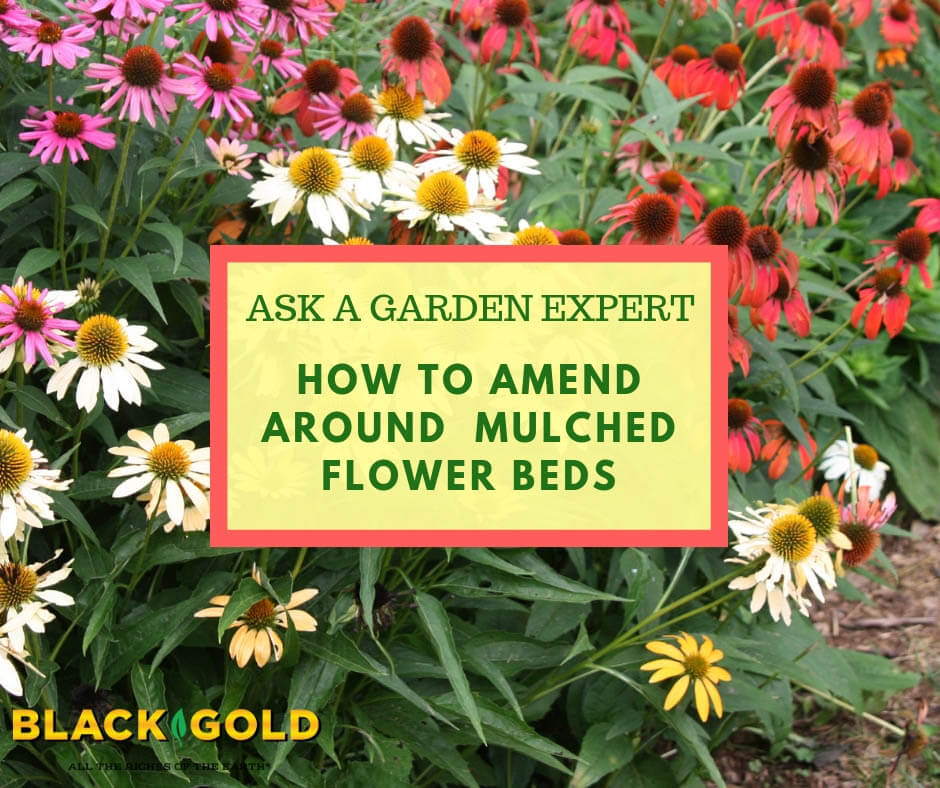“On an annual rotation, what do I do with my mulch? Do I strip and reapply every year? How do I amend my soil in a flower bed that already has perennials? Do I just topdress? Or dig around the perennials and mix with native soils?” Question from Tim of Springfield, Pennsylvania
Answer: Good questions! I am assuming that you apply bark mulch, which is generally slow to break down, especially if less processed when applied or comprised of cedar or other evergreen barks. I will also assume that you apply it at the standard depth of at least 2 to 3 inches.
You have several options for improving the soil of your mulched annual and perennial beds.
Annual Beds
- Switch to a mulch that feeds the soil. Bark mulch is notorious for binding essential nutrients, namely nitrogen, and breaks down too slowly to rapidly feed your soil. Mulching with composted bark, compost, or leaf mulch (all of which quickly integrate into the soil) will do the duel job of protecting against weeds and feeding your soil. (OMRI Listed Black Gold Garden Compost Blend is an excellent choice for the soil surface and as an amendment.)
- If you want to stick with bark mulch for your annual beds, do a soil re-haul in the spring, once your soil is warm enough to work. Neatly rake your mulch onto a tarp and generously and deeply work compost and peat moss into your beds. Work it down with a garden fork or tiller to a depth of at least 8 inches. This is also a great time to add slow-release flower fertilizer for the season. Then plant your annuals first and re-mulch afterward to avoid getting mulch into the planting holes.
Perennial Beds
- Once again, consider switching to a mulch type that better feeds your soil and garden plants, and be sure to fertilize your perennials yearly.
- If you want to stick with bark mulch, you could leave 6-inch a ring around each perennial and apply either compost or earthworm castings on the surface annually in the spring. Even when applied to the soil surface, the quick-to-decompose organic matter will feed your plants and soil microorganisms.
- If you are really concerned about the soil quality of your perennial beds, do a soil re-haul in the spring. Start by digging your perennials (this is also a great time to divide them and/or redesign your beds), then follow the same steps listed above. Perennials tend to set deeper roots than annuals, so it pays to amend the soil a bit deeper.
I hope that these tips are helpful!
Happy Gardening!
Jessie Keith
Black Gold Horticulturist


